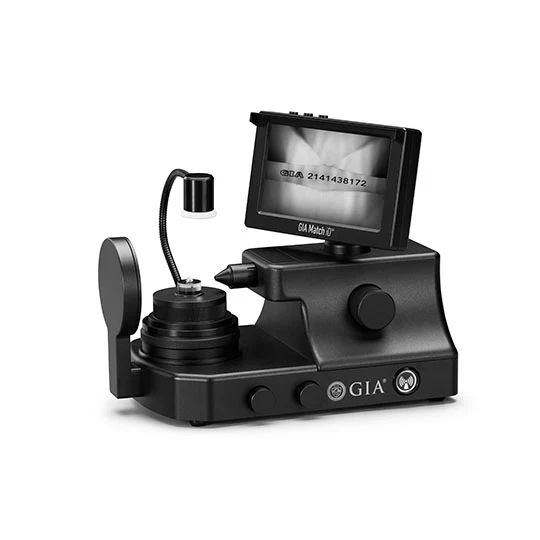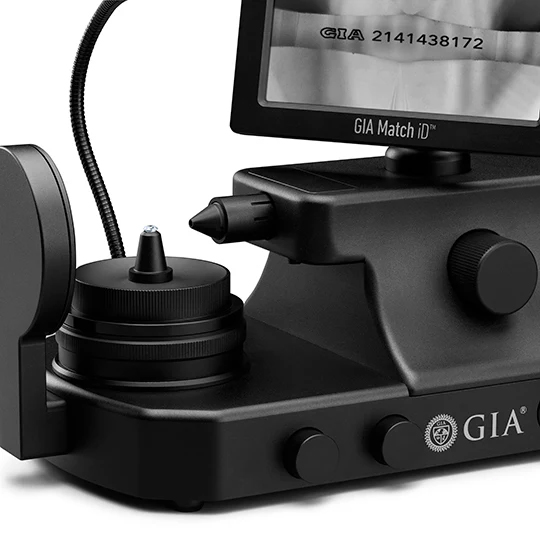education
Industry Insights

Protect Your Customers and Your Business.
Sponsored Content from Gemological Institute of America®
One of the most pressing challenges facing the diamond industry is the risk of laboratory-grown diamonds being falsely presented as natural diamonds. It is a problem that presents a very significant danger to consumer trust in the trade and one that GIA has been monitoring closely.
The Challenge of Distinguishing Laboratory-Grown from Natural Diamonds
As we know, it has become easier than ever for laboratory-grown diamonds to contaminate the natural diamond supply chain. In recent years, GIA encountered instances of laboratory-grown diamonds inscribed with report numbers belonging to natural diamonds. These laboratory-grown diamonds had 4Cs grades and measurements closely resembling those listed on accompanying natural diamond reports.
These occurrences demonstrate the need for fast, reliable ways to identify laboratory-grown diamonds and separate them from natural diamonds throughout the industry.
You deserve to know what you are buying and selling – to protect your customers as well as your business and your reputation.
It is with the trade and consumer protection in mind that GIA, the most trusted organization in diamond research and diamond grading, offers innovative diamond detection services and technology, like the GIA iD100®.

GIA iD100®: Your Defense Against False Natural Diamonds
Natural diamond detection is the trade’s most effective defense against this looming threat. And the GIA iD100® offers that defense with speed and accuracy – all backed by GIA’s unrivaled reputation.
In under two seconds, the GIA iD100® can identify a diamond as natural with 100% accuracy. It is a small, yet powerful desktop instrument that makes diamond testing convenient. Retailers can test both loose and mounted diamonds from the convenience of their own store and use it for demonstrations to increase client confidence.
Few other diamond detection machines can match the speed and precision of the GIA iD100®. To protect your business reputation, this speed, accuracy, and convenience are crucial.
With the GIA iD100®, simply point its probe at a stone’s table to receive a result; the probe can be manipulated to reach every diamond in mounted jewelry and can read stones as small as 0.9mm in diameter. Results are easy to read. You don’t need to interpret graphs, colors, reference charts or data to know whether your stone is natural. In just two seconds, you get a simple “Pass” for natural diamonds and “Refer” for stones that need further testing.
In the event that your stone needs further testing, let the experts at GIA tell you the identity of your stone.

Complimentary GIA Report Confirmation Service
GIA is taking strong action in response to reports of fraudulent GIA inscriptions on laboratory-grown diamonds cut to nearly match GIA-graded natural diamonds.
For a limited time, GIA will offer a complimentary service to verify GIA reports, confirming that a diamond with a GIA inscription matches the inscribed GIA report number. GIA graded diamonds, with or without an inscription, may be verified via GIA’s Report Confirmation Service.
In addition, diamonds already graded and inscribed by GIA can be definitively verified using GIA Match iD™. This inscription viewing instrument uses Artificial Intelligence to connect to GIA’s secure database via the GIA App to precisely match a loose diamond to its GIA digital grading report. Learn more about GIA Match iD™ here.
“Combatting this fraud is vital to protecting the public and ensuring their confidence in gems and jewelry – this is GIA’s mission,” said GIA President and CEO Susan Jacques. “We, like Tiffany, Cartier and other well-known global companies who are vigilant about protecting their valuable brands from counterfeiting and fraud, will take vigorous action to protect GIA and the trust consumers place in us.”


